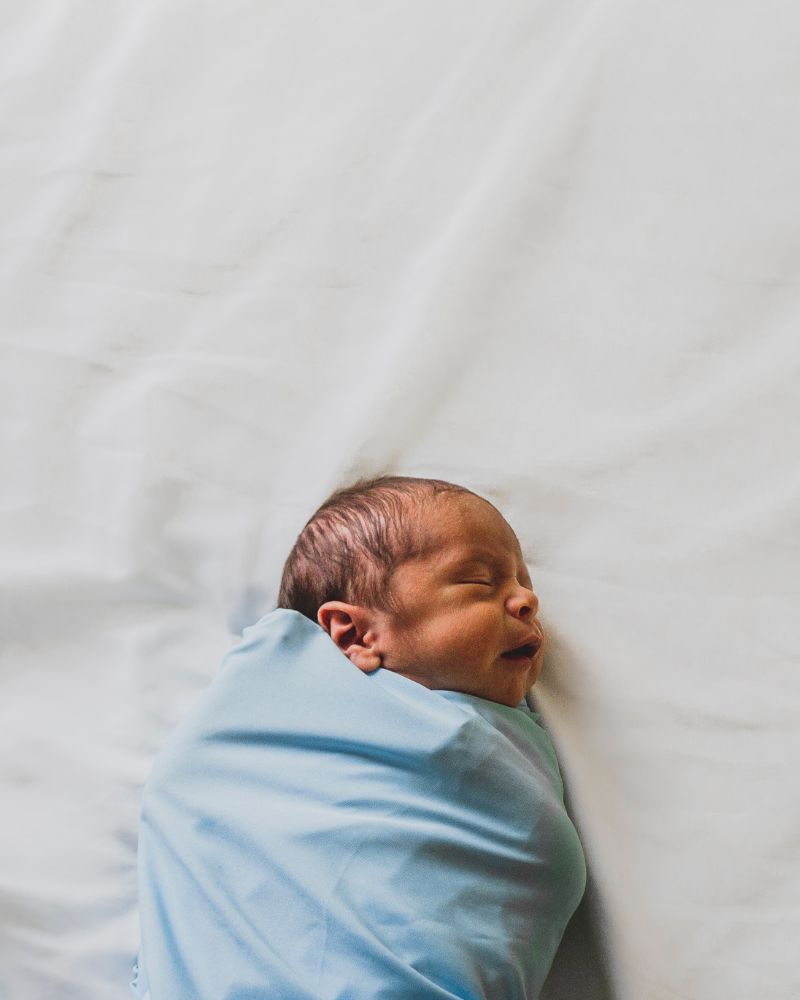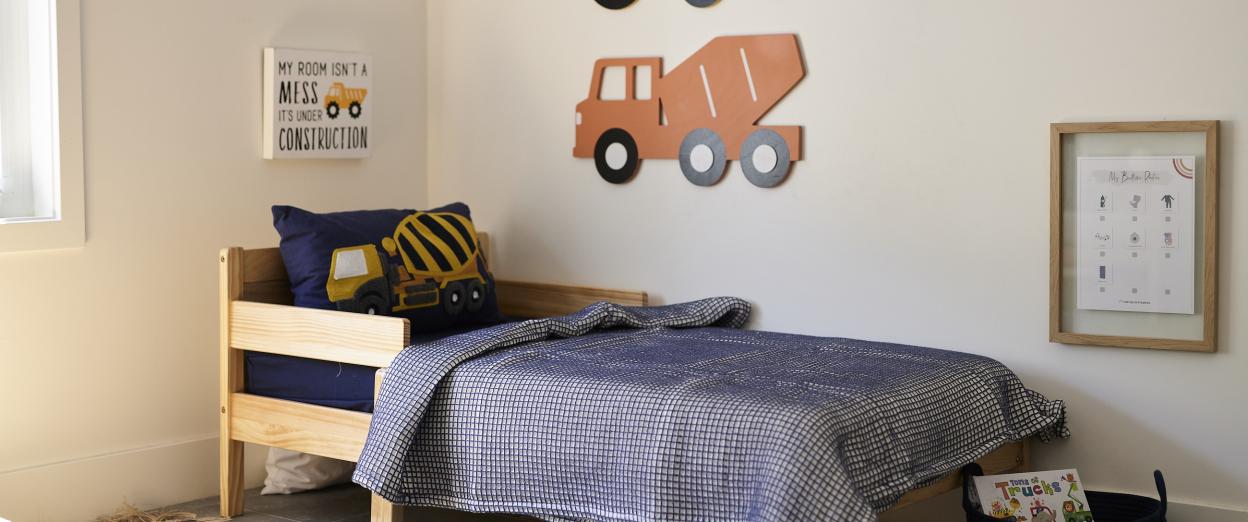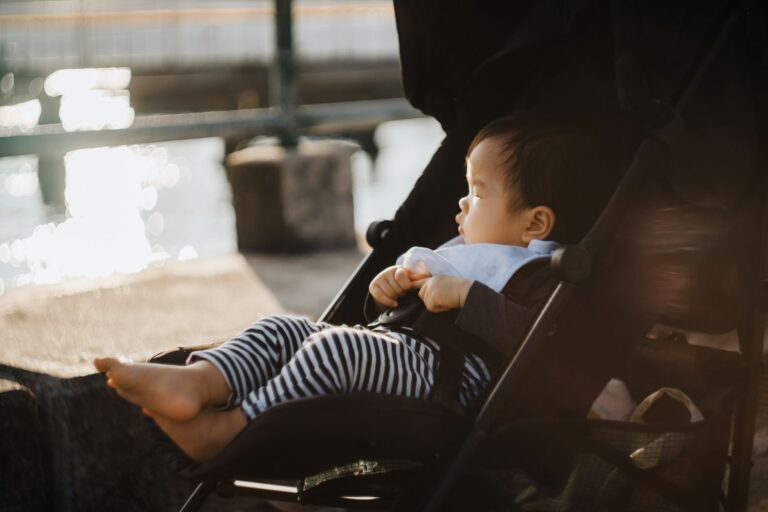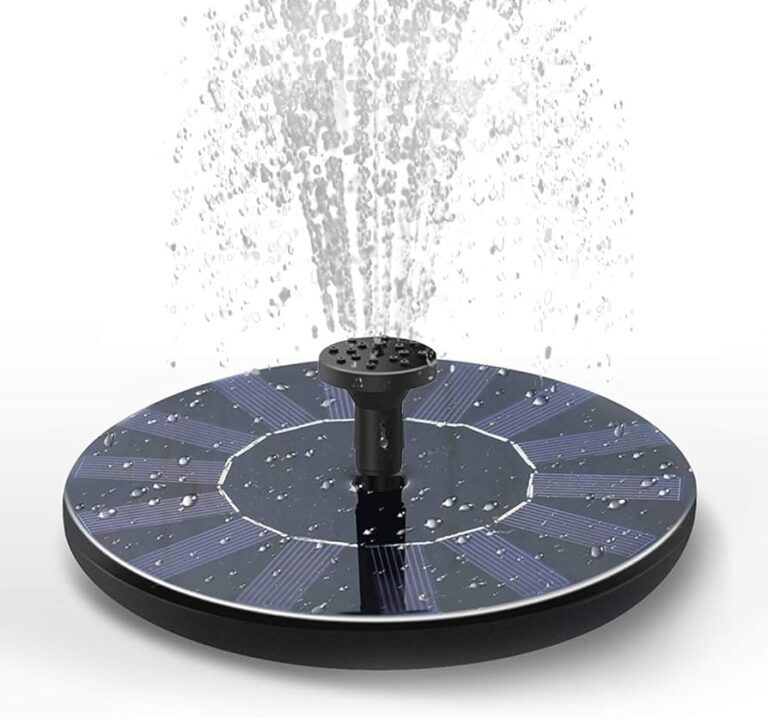How Long Can a Child Sleep in a Toddler Bed? The Ultimate Guide
A child can sleep in a toddler bed until around three to five years old, depending on their size and preferences. The majority of children outgrow their toddler bed by the age of three.
However, some children may continue to use a toddler bed until they are five years old. The transition to a twin bed usually occurs when the child reaches the weight limit of the toddler bed, which is typically around 50 pounds.
It is important to ensure that the child is safe and comfortable in their sleeping arrangement before transitioning them to a new bed.
Factors That Determine How Long A Child Can Sleep In A Toddler Bed
When it comes to transitioning your child from a crib to a toddler bed, there are several factors that determine how long they can sleep in a toddler bed. Understanding these factors can help you make an informed decision about when it’s the right time to make the transition. In this article, we’ll explore the age of the child, size and weight considerations, developmental milestones, the child’s comfort and preference, and safety considerations. Let’s dive in!
Age Of The Child
One of the key factors that determine how long a child can sleep in a toddler bed is their age. The age at which a child is ready to transition to a toddler bed can vary from child to child. While there is no specific age that suits every child, most experts recommend waiting until the child is at least 18 months old before making the switch. This ensures that they have developed the necessary cognitive and motor skills to safely navigate the bed.
Size And Weight Of The Child
The size and weight of the child are important considerations when determining how long they can sleep in a toddler bed. Toddler beds typically have weight limits, often ranging from 50 to 75 pounds. It’s crucial to check the manufacturer’s guidelines to ensure the bed can safely accommodate your child’s weight. Additionally, the size of the bed should provide enough space for the child to stretch and move comfortably during sleep.
Developmental Milestones
Developmental milestones can also play a role in determining how long a child can sleep in a toddler bed. These milestones include skills such as climbing, standing, and jumping. If your child has already mastered these skills, it might be an indication that they are ready for a toddler bed. However, if they are still struggling with these milestones, it may be wise to wait a little longer before transitioning to a bed.
Child’s Comfort And Preference
A child’s comfort and preference are essential factors to consider when determining how long they can sleep in a toddler bed. Some children may feel more secure in their cribs and might resist transitioning to a bed. Others may show excitement and eagerness to sleep in a larger bed. It’s important to listen to your child’s cues and observe their behavior to determine their level of comfort with the transition.
Safety Considerations
Safety should always be a top priority when determining how long a child can sleep in a toddler bed. Some safety considerations include ensuring that the bed is low to the ground to prevent falls, using guardrails to prevent rolling off the bed, and keeping the area around the bed free from hazards. Regularly inspecting the bed for any loose or broken parts is also crucial to ensure a safe sleeping environment for your child.
By taking into account these factors – age, size and weight, developmental milestones, child’s comfort and preference, and safety considerations – you can make an informed decision about when your child is ready to sleep in a toddler bed. Remember, each child is unique, so it’s important to assess their individual needs and readiness for the transition.
Average Age Range For Sleeping In A Toddler Bed
The average age range for sleeping in a toddler bed can vary, but most children outgrow them around three to five years old. The transition depends on factors such as the child’s size, bed size, and personal preferences.
Common Age Ranges For Transitioning From A Crib To A Toddler Bed
Transitioning from a crib to a toddler bed is an important milestone in a child’s development. The common age ranges for this transition vary, but most children make the switch between the ages of 18 months and 3 years. However, it is important to note that every child is unique and may have individual readiness cues for moving to a toddler bed.
Impact Of Individual Child Development On Transitioning
The age at which a child is ready to sleep in a toddler bed can be influenced by various factors, including their physical and cognitive development. Some children may be ready to transition earlier, showing signs of independence and being able to climb in and out of the bed safely. Others may take longer to adjust and may require additional time in their crib. It is crucial to consider each child’s individual development and readiness before making the transition.
Signs That Indicate Your Child Is Ready For A Toddler Bed
Is your child ready for a toddler bed? Look out for signs like climbing out of the crib, showing interest in a big kid bed, and staying in bed throughout the night. When it comes to sleep duration in a toddler bed, it depends on factors like bed size, child size, and personal preferences.
Transitioning your child from a crib to a toddler bed is an important milestone in their early years. But how do you know when it’s the right time? Thankfully, there are several signs that indicate your child is ready for a toddler bed. Paying attention to both physical signs and behavioral indicators can help you make a smooth and successful transition. In this article, we will explore these signs in detail and provide you with some helpful tips for ensuring a seamless move to a toddler bed.
Physical Signs Of Readiness
It’s essential to consider your child’s physical growth and development when determining if they are ready for a toddler bed. Here are some physical signs that indicate your child is ready to make the switch:
- Ability to climb in and out of the crib: If your child has started to independently climb in and out of their crib, it might be a sign that they are ready for a toddler bed. This shows that they have the motor skills and coordination necessary to navigate a higher sleeping surface.
- Increased height and weight: As your child grows taller and gains weight, they may start to feel cramped and restricted in their crib. A toddler bed provides more space and freedom for movement, allowing them to sleep comfortably.
- Outgrowing the crib: If your child’s feet are hanging over the edge of the crib or their head is touching the top, it’s a clear indication that they have physically outgrown their crib and need a larger sleeping surface.
Behavioral Indicators Of Readiness
Aside from physical signs, there are also behavioral indicators that suggest your child is ready for a toddler bed. Look out for the following behaviors:
- Showing an interest in big-kid beds: If your child is fascinated by their older sibling’s bed or shows excitement when they see toddler beds in stores or books, it’s a sign that they are curious about making the transition.
- Resisting the confinement of a crib: If your child consistently tries to climb out of their crib or expresses frustration and discomfort when confined to it, it could mean they are ready for a bed that gives them more freedom.
- Successfully staying in a bed during nap times: If your child is already napping in a regular bed without any issues or attempts to escape, it indicates that they are capable of sleeping in a toddler bed during the night as well.
Tips For A Smooth Transition
Making the transition from a crib to a toddler bed can be a smooth process if you follow these tips:
- Introduce the idea gradually: Talk to your child about the upcoming change and introduce the concept of a toddler bed well in advance. Show them pictures or books about toddler beds to help them understand what to expect.
- Involve your child in the decision-making process: Let your child pick out their own bedding or choose a toddler bed that they find appealing. Involving them in the process will make them feel more excited and empowered about the transition.
- Stick to a consistent bedtime routine: Maintaining a consistent bedtime routine will provide a sense of stability and security during the transition. Stick to familiar rituals such as reading a bedtime story or singing a lullaby.
- Ensure the sleep environment is safe: Make sure the toddler bed is placed in a safe location and securely anchored to prevent any accidents. Remove any hazards or potential risks from the room, such as cords or sharp objects.
- Be patient and supportive: Understand that your child may take some time to adjust to the new sleeping arrangement. Offer reassurance and support, and be prepared to address any fears or anxieties they may have.
By paying attention to the physical signs of readiness, observing behavioral indicators, and implementing these practical tips, you can ensure a smooth and successful transition for your child from a crib to a toddler bed. Remember, every child is different, so trust your instincts and adapt these strategies to fit your child’s unique needs.
Tips For Maximizing The Lifespan Of A Toddler Bed
A toddler bed is an important investment for parents, providing a safe and cozy space for their little one to sleep. To ensure you get the most out of your toddler bed and make it last for as long as possible, here are some tips to maximize its lifespan.
Choosing A High-quality And Durable Toddler Bed
When it comes to selecting a toddler bed, it’s crucial to choose one that is high-quality and durable. Look for a bed made from sturdy materials such as solid wood or heavy-duty metal. This will not only ensure the bed can withstand the wear and tear of a growing child but also provide added safety and stability.
Additionally, check for safety certifications and standards to guarantee the bed meets industry guidelines. Investing in a well-built toddler bed will minimize the need for frequent replacements and ensure it lasts for years to come.
Regular Maintenance And Care
Just like any other piece of furniture, a toddler bed requires regular maintenance and care to extend its lifespan. Make sure to follow the manufacturer’s instructions for cleaning and maintenance, which may include using mild soap and water for cleaning and avoiding harsh chemicals.
Regularly inspect the bed for any loose screws, cracks, or signs of wear. Tighten any loose screws and reinforce any weak spots to prevent accidents. Additionally, consider using mattress protectors and fitted sheets to keep the bed clean and free from stains.
Adjusting The Bed As The Child Grows
As your child grows, it’s important to adjust the toddler bed to accommodate their changing needs. Most toddler beds come with adjustable mattress heights, allowing you to lower the mattress as your child grows taller. This ensures their safety and prevents them from climbing out of the bed on their own.
Moreover, consider removing any unnecessary accessories or side rails that might limit the bed’s lifespan. By adapting the bed to suit your child’s developmental stage, you can prolong its usefulness and ensure a comfortable sleeping environment.
Potential For Using The Toddler Bed As A Daybed Or Transition To A Twin Bed
While toddler beds are designed for children aged 2 to 5, they can serve multiple purposes beyond the toddler years. Many toddler beds have the potential to convert into a daybed by simply removing the front rail. This allows your child to continue using the bed as a cozy spot for reading or playing during the day.
Furthermore, some toddler beds can also be transformed into a twin bed, providing a smooth transition from a toddler bed to a larger sleeping surface. This versatility extends the lifespan of the bed and saves you the cost of purchasing a new bed when the time comes.
By following these tips and taking proper care of your toddler bed, you can ensure it remains a comfortable and safe sleeping space for your child as they continue to grow. A well-maintained and adaptable toddler bed will not only save you money in the long run but also provide your child with a sense of security and familiarity.
Transitioning From A Toddler Bed To A Twin Bed
Transitioning from a toddler bed to a twin bed is an exciting milestone in your child’s life. It signifies their growth and development, as well as their readiness for a bigger sleeping space. However, this transition can also be challenging for both children and parents. To help make this process smoother, here are some important factors to consider:
Signs That It’s Time To Transition
Knowing when it’s the right time to transition your child from a toddler bed to a twin bed is crucial for a successful change. Here are some signs that indicate your child may be ready:
- Your child consistently outgrows their toddler bed or feels cramped in it
- They are physically capable of climbing in and out of the bed independently
- Your child expresses interest in having a “big kid” bed
- They have successfully transitioned from a crib to a toddler bed
Preparing Your Child For The Change
Preparing your child for the transition is an essential step to help them adjust to their new sleeping environment. Here are some tips to help prepare your child:
- Communicate openly: Talk to your child about the upcoming change and emphasize the excitement of having a new bed.
- Involve them in the process: Let your child choose their new twin bed or bedding, making them feel like an active participant in the decision-making.
- Create a familiar sleep routine: Maintain your child’s regular bedtime routine to provide consistency and comfort during the transition.
- Gradual transition: Consider starting with naps in the twin bed before implementing overnight sleeping to help your child ease into the new bed.
Tips For A Successful Transition
Ensuring a successful transition involves some additional considerations. Here are some tips to make the process smoother:
- Childproof the bedroom: Secure any potential hazards or furniture that could pose a safety risk in your child’s new bedroom.
- Provide comfort objects: Encourage your child to bring their favorite stuffed animal or blanket to the twin bed for added comfort.
- Offer reassurance: Be patient and supportive during this transition period, offering encouragement and reassurance to help alleviate any anxiety your child may have.
- Stick to the routine: Maintain consistency with your child’s bedtime routine to provide a sense of familiarity and promote better sleep.
Choosing The Right Twin Bed For Your Child
When selecting a twin bed for your child, it’s important to consider their comfort and safety. Look for a bed that meets the following criteria:
| Sturdy construction: | Choose a bed made of durable materials that can withstand energetic movements and ensure long-term use. |
| Appropriate size: | Select a twin bed that provides enough space for your child to sleep comfortably without feeling cramped. |
| Safety features: | Ensure that the bed is equipped with safety rails, especially if your child is used to having them on their toddler bed. |
By considering these factors and following the tips provided, you can facilitate a smooth and successful transition from a toddler bed to a twin bed. Remember, every child is different, so be patient and adjust the process to best suit your child’s needs.

Credit: us.kendamil.com
Frequently Asked Questions Of How Long Can A Child Sleep In A Toddler Bed
How Long Do Kids Stay In A Toddler Bed?
Most kids stay in a toddler bed until they are around three to five years old. The duration depends on the size of the bed, your child’s size, and their preferences.
When Should I Get Rid Of My Toddler Bed?
When is it time to get rid of my toddler bed? It depends on the size of the bed, your child’s size, and their preferences. Most kids outgrow their toddler bed around three years old, but some may stay in it until age five.
What Is The Weight Limit For A Toddler Bed?
The weight limit for a toddler bed is 50 lbs.
How Do You Know Your Child Is Ready For A Toddler Bed?
You can tell your child is ready for a toddler bed when they have outgrown their crib, are physically able to climb in and out of bed safely, and show signs of being ready for the transition. Look for indicators such as showing interest in a big kid bed, being able to stay in bed through the night, and no longer needing the security of crib rails.
Conclusion
In determining how long a child can sleep in a toddler bed, various factors come into play. According to readers’ responses, most children outgrow their toddler beds by the age of three, although some may continue to sleep in them until the age of five.
The size of the bed, the child’s size, and their personal preferences all play a role in this transition. It’s important to consider the child’s safety and comfort when deciding when to transition them to a twin bed.








